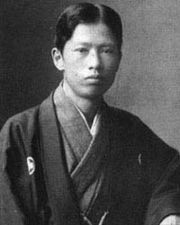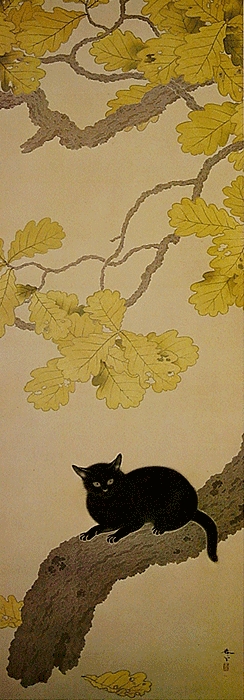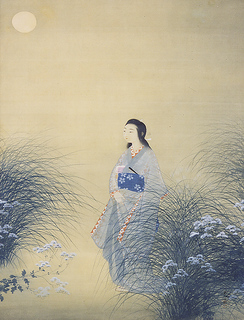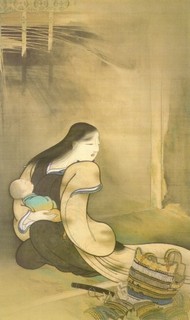Biography of Japanese Painter
Hishida Shunso (1874 - 1911)

Shunso was born in Iida of Nagano Prefecture.
His given name was Mioji.
In 1890, Shunso entered the Tokyo School of Fine Arts (Tokyo Bijutsu
Gakko) and received lessons from Hashimoto Gaho.
Shunso was one year Yokoyama Taikan and Shimomura Kanzan's junior.
They were influenced a great deal by Okakura Tenshin, the head teacher
of the school at that time.
However, as Tenshin was radical reformer of Japanese painting, there are
not a few opponents in the school.
In 1898, Tenshin resigned the position cause of action of the opponents.
Taikan, Kanzan and Shunso were working for the school as teachers around
that time, they also left their jobs and got into line with Tenshin.
Shunso took part in the establishment of the Japan Art Institute (Nihon
Bijutsu-In) with Tenshin, Taikan and Kanzan.
In 1903, Shunso went to India with Taikan.
In 1904, Shunso took off a two-year journey to America and European countries
with Tenshin and Taikan.
In 1906, they moved to Izura of Ibaraki Prefecture accompanied with the
replacement of the Nihon Bijutsu-In to that place.
Though, Shunso got eye trouble so that he moved to Tokyo for treatment
in 1908.
Driven by fear of blindness, he painted frantically.
Finally, he became blind and died on September 16 of 1911.
The conventional Japanese painting style was to draw outlines of objects.
From around 1900, Taikan and Shunso started making paintings without such
line drawings.
The new painting method without line drawings is called "Mourou-tai".
Though, their Mourou-tai painting method was beyond all apprehension and
was severely criticized by art critics at first.
Shunso sent his work "Kenshu Bosatsu" depicted with the Mourou-tai
method to the first Bunten Exhibition in 1907, however, the adjudicators
could not understand its value at all.
Later, the Mourou-tai method was recognized.
Yokoyama Taikan said that Shunso was much superior painter to him.





